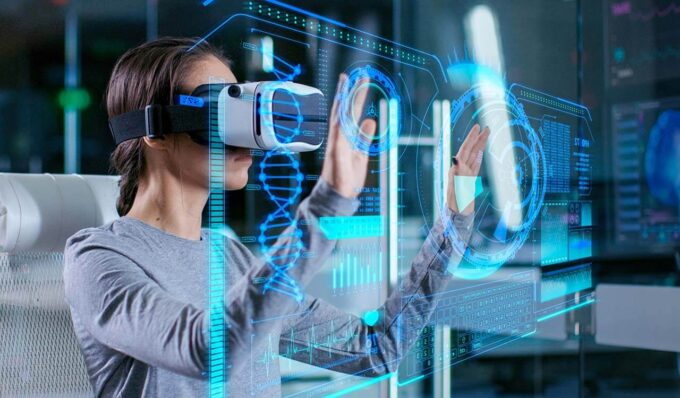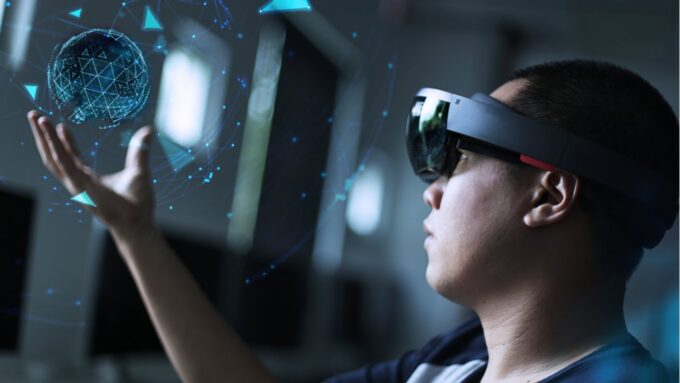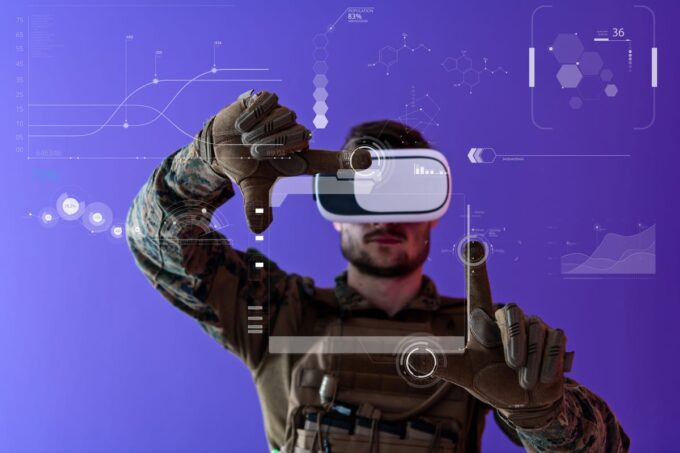Virtual reality is a technological device that can virtually immerse you into any environment or surrounding. It most often consists of a headset, headphones, glasses, and in some cases controllers to enact movement from the user. This can create a realistic setting and allows the user to immerse themselves into an experience that would otherwise be inaccessible.
Virtual reality technology is more than just entertainment. It can also be used for educational and training purposes. Due to this, many industries are welcoming virtual reality technology into the workplace and reaping its various benefits. In this article, we will provide an overview of the future of virtual reality technology and how it will positively affect various sectors of work.
VR and AR in Medicine
The use of virtual reality technology in medicine or healthcare can provide the following benefits.
It can be a great substitute for hands-on experience.

Virtual reality can be used for training in various healthcare specialties. Many educational institutions are unable to provide adequate clinical practice for their students because of stressed resources. This hinders a student’s ability to gain exposure to the various situations in which they need to be prepared for.
Fortunately, virtual reality technology can be a great substitute for this. It can allow students to immerse themselves in a medical situation that otherwise would not be accessible to them. This creates a more interactive training program in which they can obtain hands-on skills that are critical to their profession.
It allows medical students to make critical decisions in real-time.
For example, medical students often have to use corpses to practice routine medical operations. With virtual reality technology, students can instead observe how operations will look when performed on a living person and react to the event in real-time. The technology also provides three dimensional visuals and a 360 degree perspective that mimic the experience of a real operation. In other words, virtual reality technology helps medical students gain clinical experience akin to the real world, but in a way that is far less invasive and costly.
Research supports the merit of using virtual reality technology in medical practice, as one study proposes that virtual reality should be used to train medical practitioners based on their specific needs.
Furthermore, medical classes are typically centered on reading about and studying research rather than conducting it. However, things do not always go according to plan in a real life setting. If unprepared for quick decision-making, critical and impactful mistakes could be made at the workplace. Virtual reality technology can allow medical students to make decisions on the spot and see the instant results of these decisions.
This education process extends beyond school. Medical professionals are constantly in training and learning about up and coming research. Virtual reality technology could be a more cost-effective and less invasive option for this continuous training. In conclusion, virtual reality technology in medicine can allow medical students and practitioners alike to gain real-life experience without the risks of real-life interaction.
VR also has been linked to mental health benefits and improved mental health treatment, as seen in the following infographic.
VR and AR in Gaming
Virtual reality technology is used to apply three dimensional effects to computer games. It can consist of headwear, glasses, a keyboard, mouse, and hand controllers that fully immerse the user into their chosen environment. In some more advanced cases, virtual reality can even include treadmill floors or other technologies that allow users more freedom of movement. Virtual reality technology in gaming can be so effective that the environment feels genuine and real.
In addition, virtual reality technology for gaming has advanced to target specific areas of improvement. For example, with the newest virtual reality technologies, the user should not experience motion sickness, which was a common complaint of early virtual reality technology. Some headsets are also created to be used specifically in a seated position in order to combat this issue. In conclusion, virtual reality technology for gaming will continue to advance in order to help its users have the most immersive experience possible. Find what game development studio Pingle writes about the future of VR in gaming.
VR and AR in Manufacturing
The use of virtual reality technology in manufacturing can provide the following benefits.
It minimizes human error and prevents injury.

In work involving manufacturing, human error is bound to happen. It is also a sector of work that is prone to employee injuries and hazardous situations. However, virtual reality technology can provide a solution to these issues, which have been affecting the workforce for some time. Employees working in manufacturing can now be trained using virtual reality technology. The result of this training is fewer mistakes and improved productivity across the board.
Using virtual reality technology, for example, has been shown to reduce critical time in the construction and planning processes. It can allow designers to immerse themselves into or closely examine whatever it is that they are designing. The designer is able to look at their prototype from any conceivable angle using virtual reality technology. As a result, the designer may be able to pinpoint potential errors and mistakes that may not have been noticed in a real-life setting. This could prevent mistakes or injuries down the road.
It creates better communication within the workforce.
In addition, virtual reality technology can help build better communication between engineers and workers. Rather than communicating via phone or email, both engineers and workers can communicate directly through virtual reality technology. They can also have a clearer visual image of the end goal of their project. Again, this can reduce mistakes on the job and therefore prevent potentially serious injuries at the work site.
VR and AR in Personnel Training
Virtual reality technology can be used in personnel training, also known as human resources. Much of the job search and hiring process is done online anyway, so using virtual reality technology in personnel training seems like a natural progression. The use of virtual reality technology in personnel training can provide the following benefits.
It creates a more immersive onboarding process.
Virtual reality creates a more immersive environment for both the employer and potential employee in various ways. For example, a company could set up a virtual reality experience in which prospective job candidates are immersed in situations that would happen on the job. This could allow candidates to get a better scope of what the job entails, the work environment, and the job expectations. On the other hand, it would also give employers a better sense on who would be the best fit for the job. In addition, the immersive onboarding experience would encourage users to actively engage with the prospective candidate and onboarding experience, rather than mindlessly clicking through the process.
It can attract potential employees.

In addition, employers can use virtual reality technology to attract potential job candidates. For example, a business could create an immersive virtual reality experience to recruit job seekers. They could include a tour of the office space and show what a day on the job looks like. These are more immersive and engaging options than a Youtube video or Instagram post.
It can prevent isolation.
In today’s modern world, where so much of your job search and onboarding process occurs online and in isolation, virtual reality allows for more engagement between the prospective candidate and employer. It can reduce training time and make the potential job candidate feel more welcomed and involved in their new workplace.
What is the Future of VR?
If you are wondering what the future of virtual reality is, it is a safe bet that its future is full of promise. Virtual reality technology can positively affect a variety of employment sectors by providing resources and opportunities for employees to grow. Using virtual reality technology on the job can help employees become the most capable, confident versions of themselves. The industries that are positively affected by virtual reality technology include but are not limited to the following.
- Medicine
- Gaming
- Manufacturing
- Personnel Training
In addition, here are some additional fields that are expected to take advantage of virtual reality technology by 2025.
Across all sectors, virtual reality has shown to result in the following benefits.
- Reduced mistakes on the job
- Reduced time spent on training and planning
- More effective line of communication
- More hands-on experience
Virtual reality will only advance in the future, which means that it can provide even more benefit to the fields of medicine, gaming, manufacturing, and personnel training, and more.









